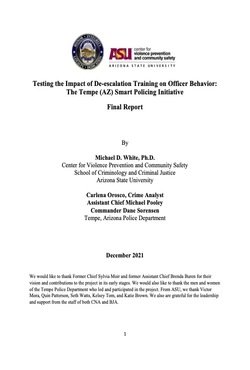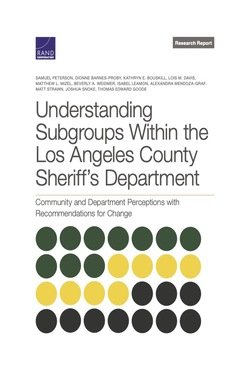By Michael D. White and Carlena Orosco
The Tempe Smart Policing Initiative is a straightforward project: design, deliver, and evaluate a de-escalation training program. The Tempe team believed an “off-the-shelf” training would not be sufficient for their needs, or the needs of their community. As a result, the team customized their own training to fit the Tempe officers and their community. Design: The Tempe team devoted 18 months to curriculum development, centered on three activities. First, they sent officers to nearly two dozen de-escalation trainings, including several of the most popular trainings such as T3 (https://www.polis-solutions.net/t3) and ICAT (https://www.policeforum.org/icat-training-guide, and trainings of specific police departments (e.g., LAPD). Officers completed an evaluation form for each training. Second, the ASU researchers spent five months shadowing peer-nominated (peers within the Tempe Police Department) top de-escalators to “watch them in action” and harness their local expertise. This included dozens of ride-alongs, one-on-one interviews, and focus groups. Third, the ASU researchers conducted a departmentwide survey to gather perspectives about de-escalation from all officers. A curriculum subcommittee reviewed all the information gathered in the design phase, and they worked with professional curriculum developers to create the training content....
Tempe: Arizona State University Center for Violence Prevention and Community Safety, 2021. 63p.





















